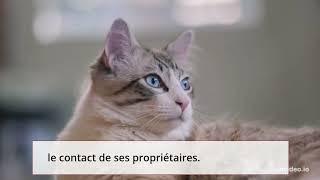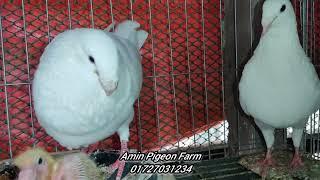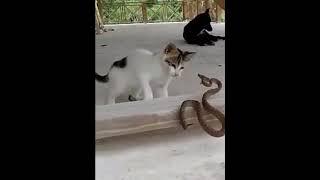Ragdoll. Ragdoll Cat breed. Ragdoll Cats puzzle for kids and adults.
Some facts.
Representatives of the Ragdoll breed impress with their bright and impressive appearance, and their good-natured and gentle disposition is legendary.
This breed of cats appeared relatively recently, but with its popularity it has already managed to remove many well-deserved “oldies” from the cat “Olympus”.
History of the origin of the breed
There is not much information about the origin of ragdolls, but their appearance is associated with high-profile scandals, lawsuits and even hoaxes. It all started in the 1960s, when US Persian cat breeder Ann Baker began buying kittens from her neighbor. The babies were born from the mating of a cat named Josephine (who was presumably a cross between a Persian and an Angora) and a Burmese cat. In addition to their soft and plush semi-long coat, they were distinguished by their extremely calm behavior, soft, affectionate disposition, and were quite large. But their main feature was low muscle tone: they completely relaxed in the hands, which is why they got their name (translated from English, “ragdoll” means “rag doll”).
Subsequently, Baker decided to “dilute” the color of the pets, which was initially dominated by gray shades. To do this, she began breeding Josephine's descendants with dark brown Burmese. How purebred they were is a moot point, since no documents about the first matings have survived.
Unusual cats gradually gained popularity, and the question naturally arose about them receiving the official status of a new breed. And here Ann Baker decided to use a trick: instead of registering her with well-known federations, she created her own International Ragdoll Cat Association (IRCA). According to its terms, all breeders had to buy the right to breed and subsequently pay a percentage of each kitten sold. To attract attention to the new breed, Baker spread ridiculous rumors. She explained the low muscle tone of her pets by the fact that the CIA carried out secret experiments on their “progenitor” Josephine during her treatment after a car accident. There were also theories about the alien origin of these cats.
International felinological organizations refused to recognize IRCA. As a result, some of the owners decided to leave it and achieve real recognition of ragdolls at the international level, with the right to participate in championships. The exit was accompanied by a loud scandal and lawsuits that dragged on for decades. As a result, ragdolls took part in the first championship only in 2000. Now they are recognized almost everywhere, although sometimes judges have difficulty identifying them: some individuals are very similar to cats of the Burmese and Balinese breeds.
Breed characteristics: size, weight, appearance
Ragdolls are large pets: among all breeds of domestic cats, they are second in size only to Savannahs and Maine Coons. Among them, sexual dimorphism is clearly expressed: adult cats are massive and weigh on average 7-10 kg, cats are more slender and graceful, their weight rarely reaches 6 kg.
The body of these pets is somewhat elongated in length, dense, with strong bones. The back of the body is heavier, the chest is wide, after the age of eight, a slight sagging of the abdomen is allowed.
Their head is also large, proportional to the body. Vibrissae pads and full cheeks are clearly defined. The ears are medium-sized, wide at the base, with rounded tips. Small tassels of hair on them are allowed. The eyes are oval in shape, set moderately wide and slightly slanted towards the bridge of the nose. The look is always open and calm. The color of the iris is blue in various shades.
Ragdolls have medium-length limbs, the front ones are slightly shorter than the back ones. Tufts of fur grow between the toes of their large paws with round feet. The tail is long, thick at the base, tapering towards a rounded tip.
The Ragdoll's coat is semi-long, soft and silky. The undercoat is moderately expressed, so it rarely mats. Body hair is longer in the collar area, as well as in the croup and hind limbs. Three color options are allowed:
Color point: dark coat on the face, tips of the paws and tail, light coat on the body (from beige to cream).
Mitted: the main tone is light, with dark areas, like color point. But unlike the latter, white “socks” on the paws, a white chin, a collar and a stripe on the belly are required.
Bi-color: white with dark areas in the form of a “mask” around the eyes (in combination with a white bridge of the nose, cheeks and whisker pads), as well as a “saddle” on the back.
Each color option can be presented in four shades: seal (“Siamese”), chocolate, blue and lilac. European felinological organizations also allow red, cream, tortoiseshell and tabby colors.
Links to other videos you might like:
Exotic cat https://youtu.be/9RJsn7FBULA
Subscribe to the channel WAP Puzzle https://www.youtube.com/channel/UCzRHSQ_NxaG981Xhq0SPZNw
#catspuzzle
Some facts.
Representatives of the Ragdoll breed impress with their bright and impressive appearance, and their good-natured and gentle disposition is legendary.
This breed of cats appeared relatively recently, but with its popularity it has already managed to remove many well-deserved “oldies” from the cat “Olympus”.
History of the origin of the breed
There is not much information about the origin of ragdolls, but their appearance is associated with high-profile scandals, lawsuits and even hoaxes. It all started in the 1960s, when US Persian cat breeder Ann Baker began buying kittens from her neighbor. The babies were born from the mating of a cat named Josephine (who was presumably a cross between a Persian and an Angora) and a Burmese cat. In addition to their soft and plush semi-long coat, they were distinguished by their extremely calm behavior, soft, affectionate disposition, and were quite large. But their main feature was low muscle tone: they completely relaxed in the hands, which is why they got their name (translated from English, “ragdoll” means “rag doll”).
Subsequently, Baker decided to “dilute” the color of the pets, which was initially dominated by gray shades. To do this, she began breeding Josephine's descendants with dark brown Burmese. How purebred they were is a moot point, since no documents about the first matings have survived.
Unusual cats gradually gained popularity, and the question naturally arose about them receiving the official status of a new breed. And here Ann Baker decided to use a trick: instead of registering her with well-known federations, she created her own International Ragdoll Cat Association (IRCA). According to its terms, all breeders had to buy the right to breed and subsequently pay a percentage of each kitten sold. To attract attention to the new breed, Baker spread ridiculous rumors. She explained the low muscle tone of her pets by the fact that the CIA carried out secret experiments on their “progenitor” Josephine during her treatment after a car accident. There were also theories about the alien origin of these cats.
International felinological organizations refused to recognize IRCA. As a result, some of the owners decided to leave it and achieve real recognition of ragdolls at the international level, with the right to participate in championships. The exit was accompanied by a loud scandal and lawsuits that dragged on for decades. As a result, ragdolls took part in the first championship only in 2000. Now they are recognized almost everywhere, although sometimes judges have difficulty identifying them: some individuals are very similar to cats of the Burmese and Balinese breeds.
Breed characteristics: size, weight, appearance
Ragdolls are large pets: among all breeds of domestic cats, they are second in size only to Savannahs and Maine Coons. Among them, sexual dimorphism is clearly expressed: adult cats are massive and weigh on average 7-10 kg, cats are more slender and graceful, their weight rarely reaches 6 kg.
The body of these pets is somewhat elongated in length, dense, with strong bones. The back of the body is heavier, the chest is wide, after the age of eight, a slight sagging of the abdomen is allowed.
Their head is also large, proportional to the body. Vibrissae pads and full cheeks are clearly defined. The ears are medium-sized, wide at the base, with rounded tips. Small tassels of hair on them are allowed. The eyes are oval in shape, set moderately wide and slightly slanted towards the bridge of the nose. The look is always open and calm. The color of the iris is blue in various shades.
Ragdolls have medium-length limbs, the front ones are slightly shorter than the back ones. Tufts of fur grow between the toes of their large paws with round feet. The tail is long, thick at the base, tapering towards a rounded tip.
The Ragdoll's coat is semi-long, soft and silky. The undercoat is moderately expressed, so it rarely mats. Body hair is longer in the collar area, as well as in the croup and hind limbs. Three color options are allowed:
Color point: dark coat on the face, tips of the paws and tail, light coat on the body (from beige to cream).
Mitted: the main tone is light, with dark areas, like color point. But unlike the latter, white “socks” on the paws, a white chin, a collar and a stripe on the belly are required.
Bi-color: white with dark areas in the form of a “mask” around the eyes (in combination with a white bridge of the nose, cheeks and whisker pads), as well as a “saddle” on the back.
Each color option can be presented in four shades: seal (“Siamese”), chocolate, blue and lilac. European felinological organizations also allow red, cream, tortoiseshell and tabby colors.
Links to other videos you might like:
Exotic cat https://youtu.be/9RJsn7FBULA
Subscribe to the channel WAP Puzzle https://www.youtube.com/channel/UCzRHSQ_NxaG981Xhq0SPZNw
#catspuzzle
- Catégories
- Chats de Race Ragdoll
- Mots-clés
- cats puzzle, cats puzzles, cat puzzles














Commentaires